
Ornamental Flame Grass (Miscanthus Sinensis Purpurascens) Stock Photo RoyaltyFree FreeImages
Miscanthus sinensis 'Purpurascens'1 Edward F. Gilman2 Introduction Maiden Grass is a gracefully arching, fine-textured grass that forms dense, reddish-green clumps. Slender leaves originate in a clump, spreading out and up like a fountain. The 3- to 4-foot-tall clumps bear silver-pink flowers in late summer
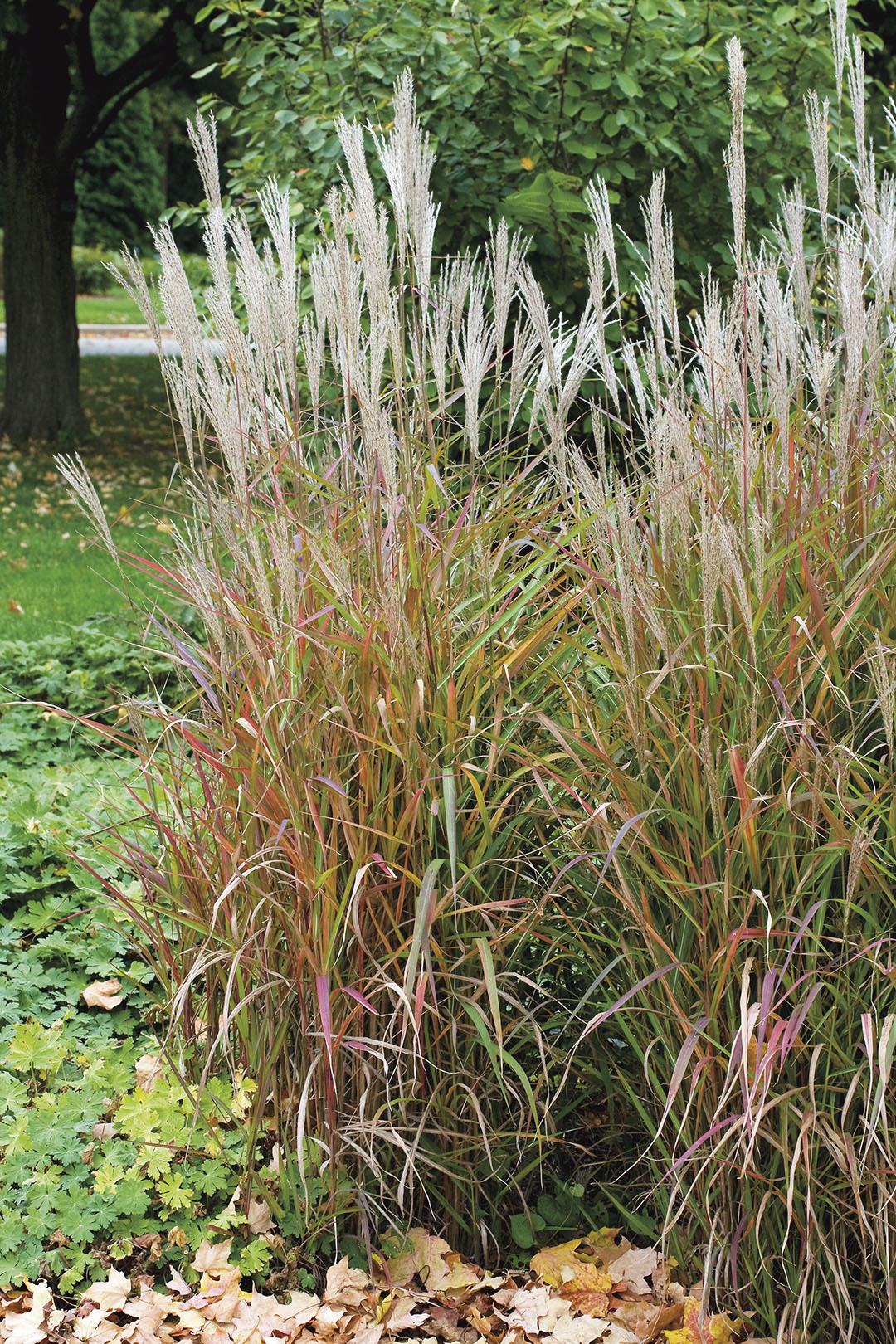
Miscanthus sinensis ‘Purpurascens’ Decograsses
Flame Grass: Features Miscanthus Purpurascens, aka flame grass, is a clump-forming warm-season grass type. The clusters are reddish-green and develop into an arching structure. Because of their flexibility, the leaves easily move in the wind, giving us a calm feeling. A clump of narrow leaves will eventually expand out and upward like a waterfall.

MISCANTHUS PURPURASCENS Horlings Plants
'Purpurascens' is a tall deciduous grass with long, narrow, purple-tinged leaves and pinkish, silky flower sprays in late summer, soon becoming silvery and turning to fawn in autumn and winter Synonyms Miscanthus oligostachyus 'Purpurascens' Miscanthus sinensis 'Purpureus' see more Miscanthus sinensis var. purpurascens misapplied Join the RHS

Miscanthus sinensis Purpurescens Pépinière Locas
When Miscanthus Sinensis "Purpurascens" first emerges in early spring, it's easy to mistake for any old green grass. It's when summer comes along that this plant - more popularly known as flame grass - really begins to live up to its red hot name.
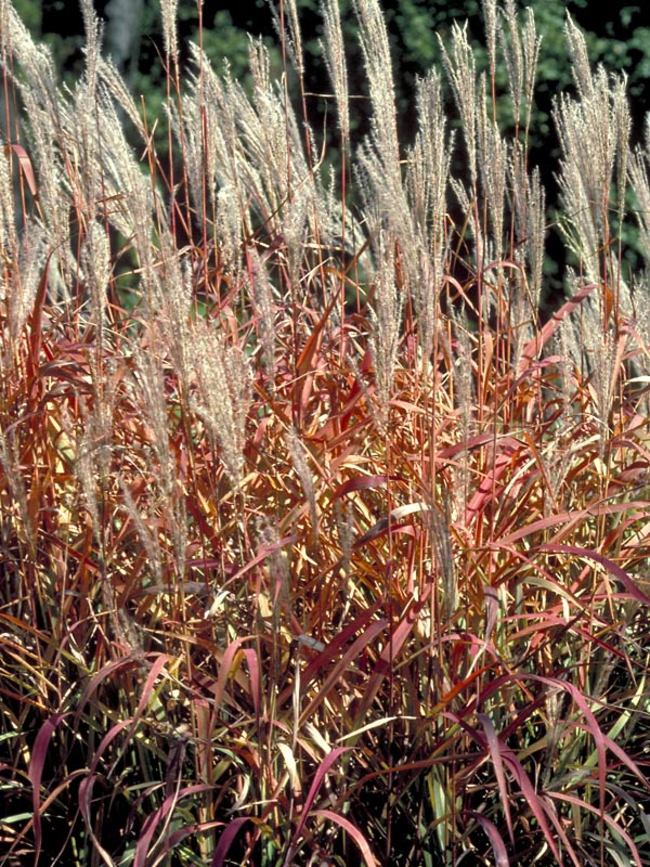
Miscanthus Purpurascens Bluestone Perennials
Purple Flame Grass (Miscanthus sinensis 'Purpurascens') is a perennial grass that comes back year after year. It's called Flame Grass because of its striking orange-red fall color. With year-round appeal, it is definitely one of the more useful and popular of the taller grasses in use today. It brings such a striking look to your landscape.
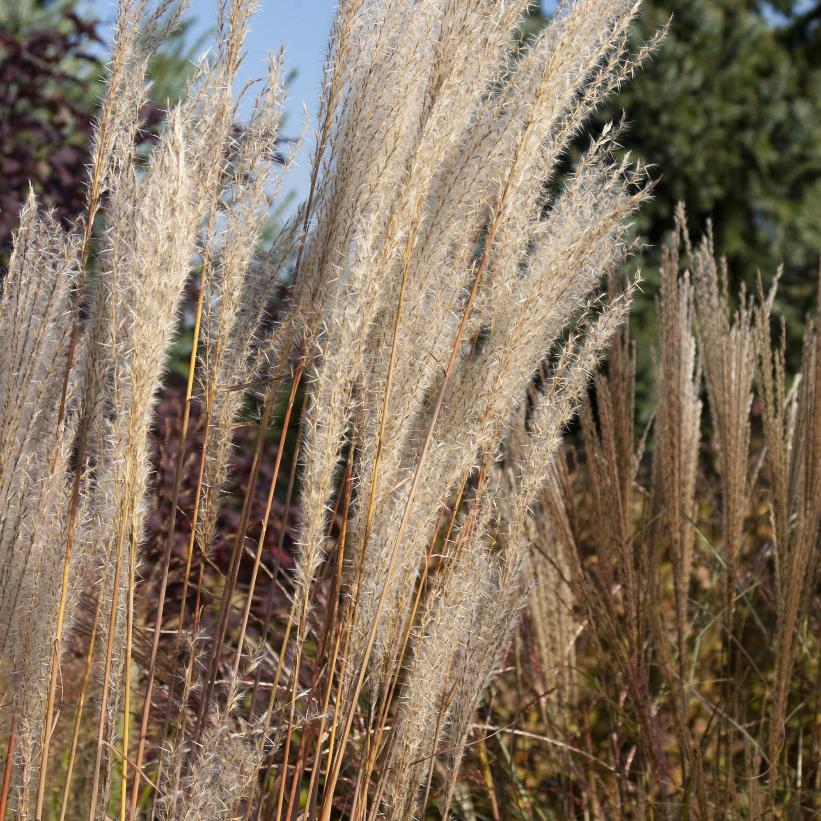
Miscanthus sinensis var. purpurascens from Neil Vanderkruk Holdings Inc.
Flame grass, or Miscanthus sinensis purpurascens, is a versatile perennial that is native to the wetlands and riverbanks of China, Japan, and Korea. Despite its origins in these regions, flame grass has adapted well to a variety of different climates, growing and blooming readily across temperate regions around the world.
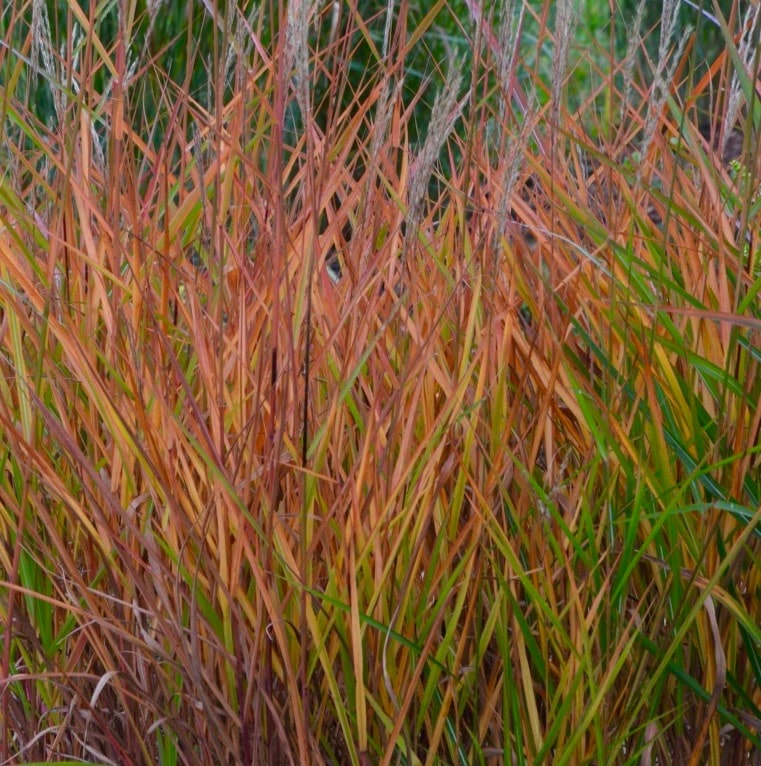
BUY FLAME GRASS Miscanthus sinensis 'Purpurascens' CANADA
Miscanthus 'Purpurascens' Common Name (s): Autumn Flame Flame Grass Phonetic Spelling miss-KANTH-us pur-PUR-ah-senz Description This versatile plant is a graceful arching, fine-textured grass that forms dense, reddish-green clumps. The foliage is flexible and blows easily in the wind.

Miscanthus sinensis 'Purpurascens' Midwest Groundcovers, LLC
Scientific name: Miscanthus sinensis 'Purpurascens' Pronunciation: miss-KANTH-us sye-NEN-sis Common name (s): 'Purpurascens' Japanese silver grass, flame grass, maiden grass Family: Gramineae Plant type: herbaceous; ornamental grass USDA hardiness zones: 7 through 9 (Figure 1) Planting month for zone 7: year round

Miscanthus sinensis 'Purpurascens' Autumn Red Flame Grass DMF Gardens
Miscanthus is a genus of 17-20 species of deciduous or evergreen perennial grasses from Africa to East Asia. Genus name comes from the Greek words miskos meaning a stem and anthos meaning flower in reference to the stalked spikelets. 'Purpurascens', commonly called flame grass, is noted for its superior orange-red fall color.

Miscanthus 'Purpurascens' Van Meuwen
Description It is an herbaceous perennial grass, growing to 0.8-2 m (3-7 ft) tall, rarely 4 m (13 ft), forming dense clumps from an underground rhizome. The leaves are 18-75 cm (7-30 in) tall and 0.3-2 cm broad. The flowers are purplish, held above the foliage.
Lovegrass Farm Miscanthus Purpurascens Ornamental Grass at Lovegrass Farm on P.E.I.
Noteworthy Characteristics. Miscanthus sinensis, commonly known as Chinese silver grass, Japanese silver grass or eulalia grass, is a clump-forming warm season grass that typically grows to 3-7' tall.It is native to lowlands and lower alpine areas in Japan, Korea and China. It has escaped gardens and naturalized in over 25 states in the Central and Eastern U.S. east of the Mississippi River.

MISCANTHUS sinensis ‘Purpurascens’
-Miscanthus sinensis var. purpurascens ('Purpurascens') - Flame Grass - to 4' tall and of medium texture, having 1" wide leaf blades with the upper foliage held horizontally from the stiff stalks, with purple-silver inflorescences in Aug., and undergoing a foliage transition from green to flaming orange-red during the 3-week period immediately
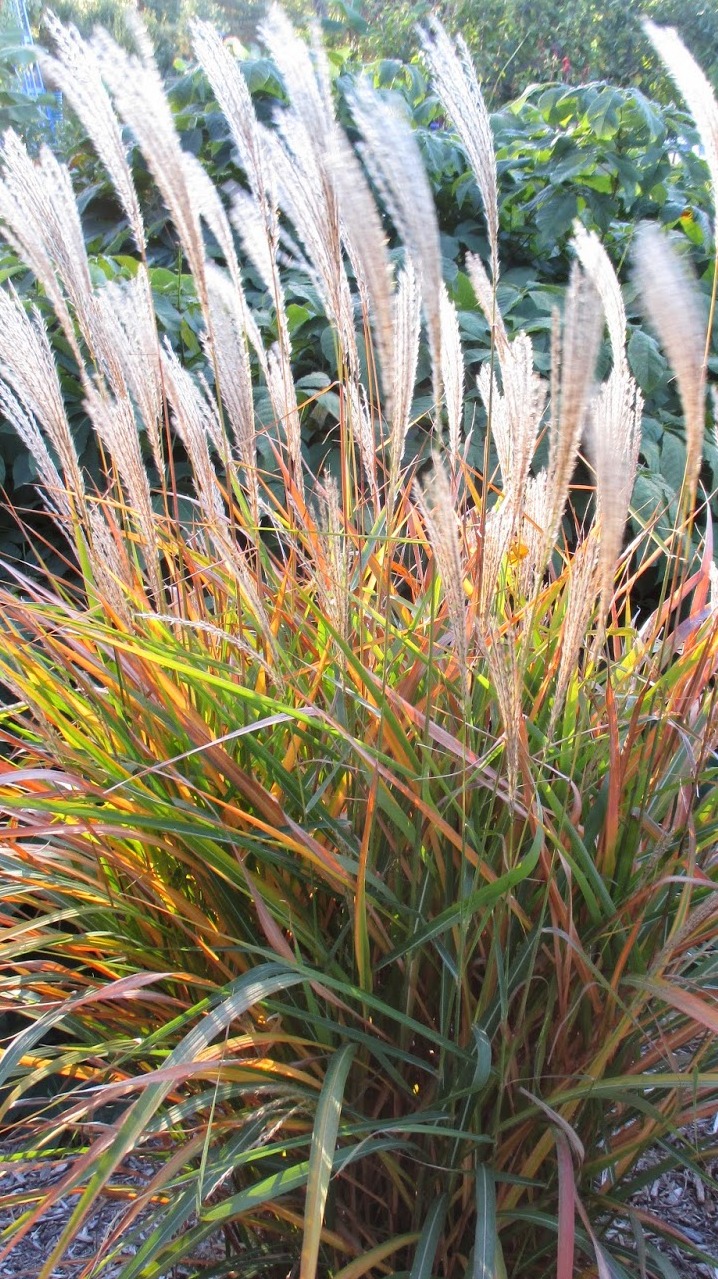
Miscanthus sinensis 'Purpurascens' Ķīnas miskante
Chinese silvergrass (Miscanthus sinensis) is widely invasive even in northern climes. It is lovely to look at, but it displaces native plants. In dry conditions, its flammability creates a fire hazard. Before planting miscanthus, check your extension office to see if your variety is listed as invasive in your area. How and When to Plant Miscanthus
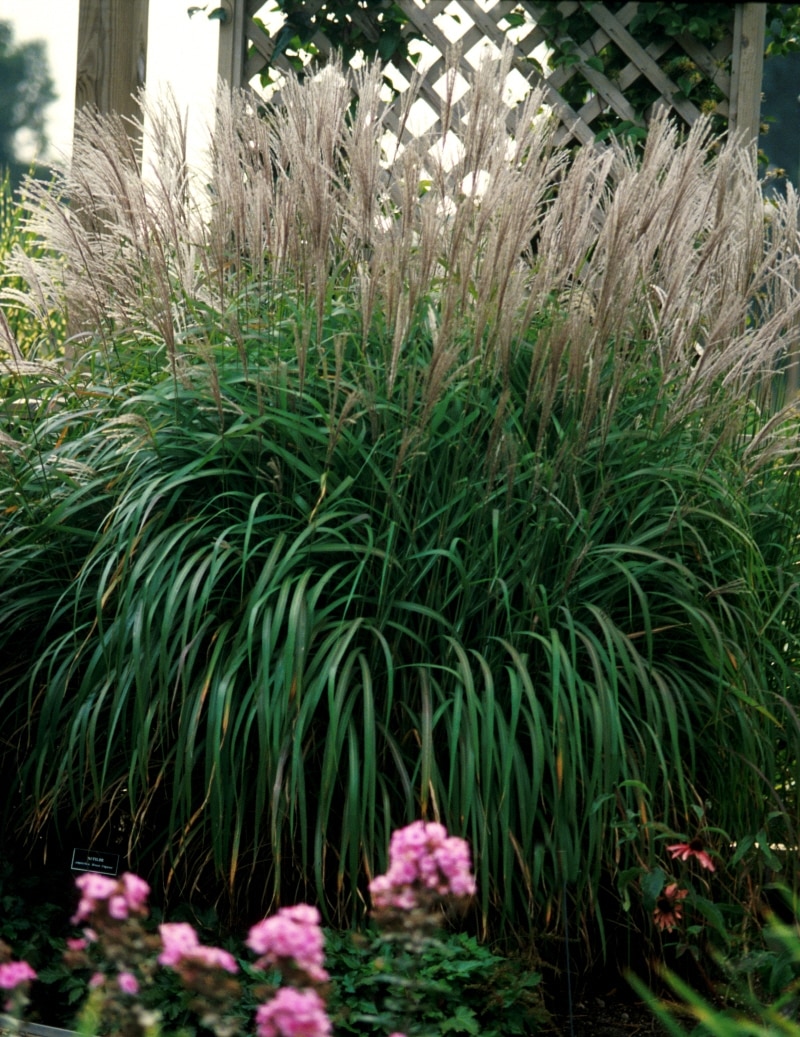
Miscanthus Sinensis Purpurascens Flame Grass SiteOne
Characteristics Height: 4.0-6.0 Feet Spread: 2.0 Feet Hardiness Zones: 4,5,6,7,8,9 Flower Color: White Shades Foliage Color: Green shades Sunlight: Full Sun (> 6 hrs. Direct Sun) Part Shade (4-6 hrs. Direct Sun) Water Requirements: Average Water Needs Consistent Water Needs Soil Quality: Poor Soil Quality Average Soil Quality Soil Chemistry:
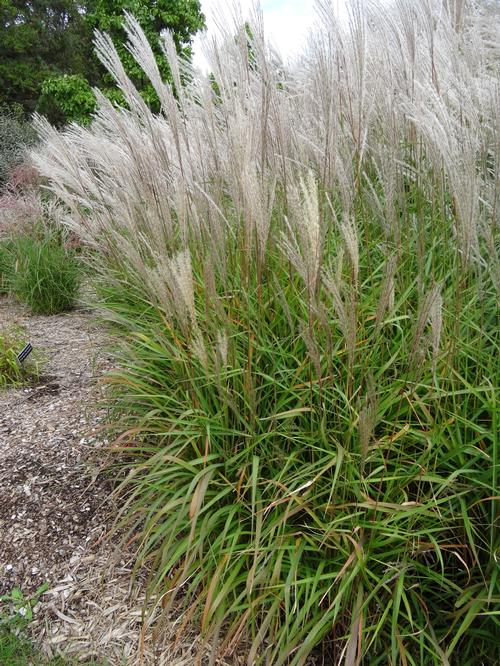
Flame Grass Miscanthus sinensis Purpurascens from Growing Colors
Overview More Information Care Knowledge Cultivars Photo Gallery (3) Miscanthus sinensis 'Positano' (Positano silver grass), growth habit; © John Hagstrom Miscanthus sinensis 'Positano' (Positano silver grass), inflorescence; © John Hagstrom Miscanthus sinensis ssp. purpurascens (Andersson) Tzvelev (Silver Grass), growth habit; © John Hagstrom

Flame Grass for Sale Online Greener Earth Nursery
Miscanthus is versatile from a design standpoint; it can be used as a specimen, for massing or screening, in large containers, or at the pond's edge. Plant this grass where its wonderful winter interest can be enjoyed. Genus Pronunciation. M. 'Purpurascens' is easy to grow, though it is not drought-tolerant and suffers in extreme heat..